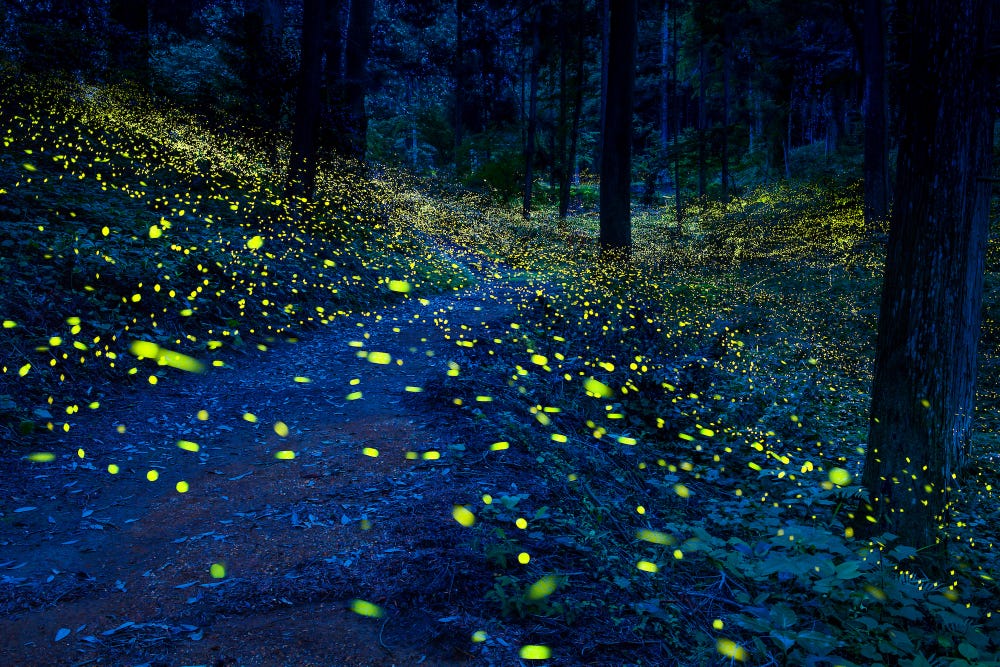The Glowing Mystery of Bhimashankar Forest Reserve in Maharashtra: Here’s Why It Shines

Enchanting bioluminescent forest in India's western ghats: Nature's astonishing display
Nature’s wonders never cease to amaze, and one such enchanting spectacle awaits adventurers in the Western Ghats of India. Within the Bhimashankar Wildlife Reserve, a rare and captivating phenomenon occurs during the monsoon season, transforming the forest into a glowing wonderland.
The Bhimashankar Wildlife Reserve occupies 131 square kilometers of the Western Ghats in Maharashtra. It is located 100 km east of the capital city of Mumbai. This reserve, which includes nine tribal villages, was established to protect an endangered species of the Indian Giant Squirrel and certain endangered reptile species that inhabit this forest. This forest is home to a rare yet stunning phenomenon called bioluminescence. After darkness engulfs the forest at sunset, the barks of the trees glow
The forest, reminiscent of scenes from the movie Avatar, comes alive with radiant luminescence after intense rainfall. This mesmerizing display is caused by Mycena, a unique bacteria that emits light in the presence of moisture, adorning branches and foliage with bioluminescent hues.
Despite extensive study, scientists remain intrigued by this natural marvel, unable to fully comprehend the reasons behind Mycena’s luminous properties. This bioluminescent forest, found primarily in the secluded village of Ahupe, offers lucky visitors a once-in-a-lifetime experience beyond compare.
The light and shine seen on decaying wood in the forest make it glow. This happens due to a phenomenon called bioluminescence. Bioluminescence is a chemical process that produces light almost identically to how fireflies do. It is caused by a fungus belonging to the genus Mycena, which has microscopic mushrooms that resemble moss. This fungus produces an enzyme called luciferase. A chemical reaction between a chemical called luciferin, the light-emitting compound found on decaying wood, and the enzyme luciferase is what leads to bioluminescence. Owing to this, the trees radiate a vivid, fluorescent green glow. Although this phenomenon can also be seen in other temperate–tropical areas, it is observed in large patches in the Western Ghats. As a result, 39 regions on the Western Ghats have been declared as UNESCO World Heritage sites, meant to be preserved with care
While the phenomenon is not a daily occurrence, fortunate explorers may witness it following evenings of heavy rainfall during the monsoon months of July, August, and September. For those eager to witness nature’s magic, a visit during these months promises an unforgettable adventure amidst the glow of the forest.









